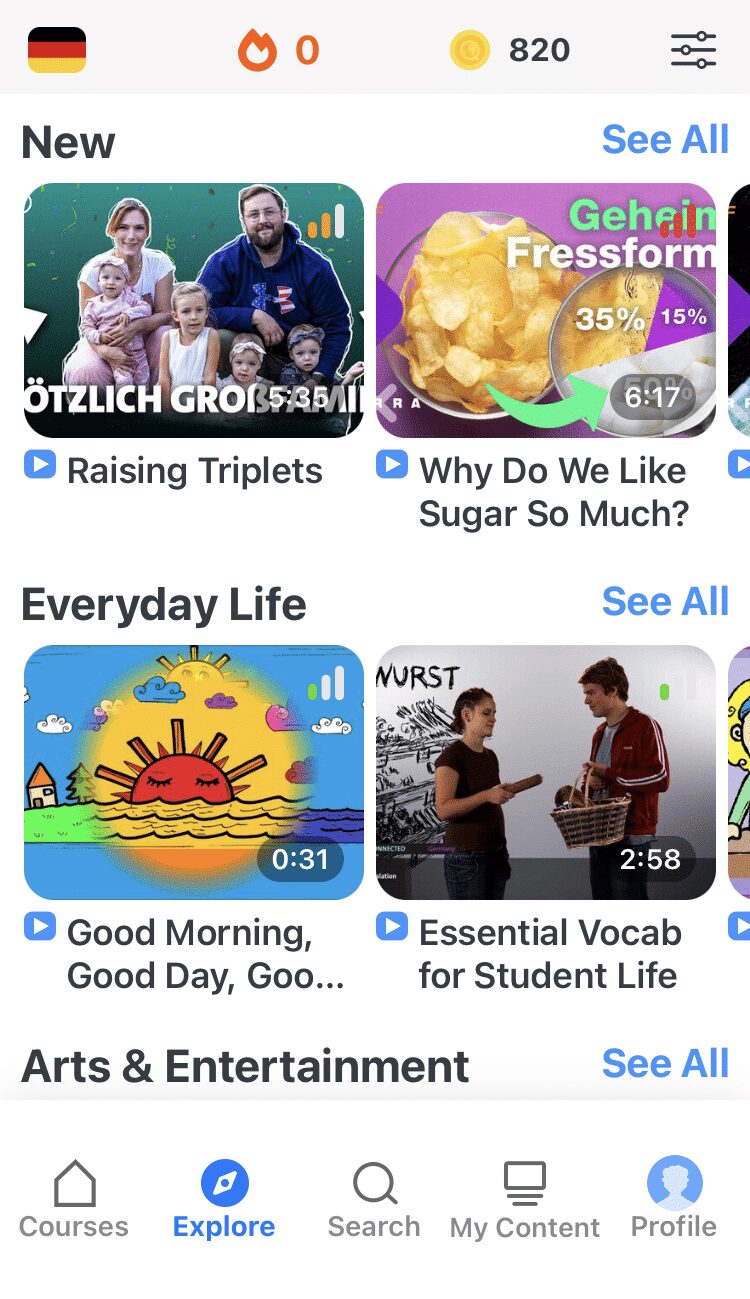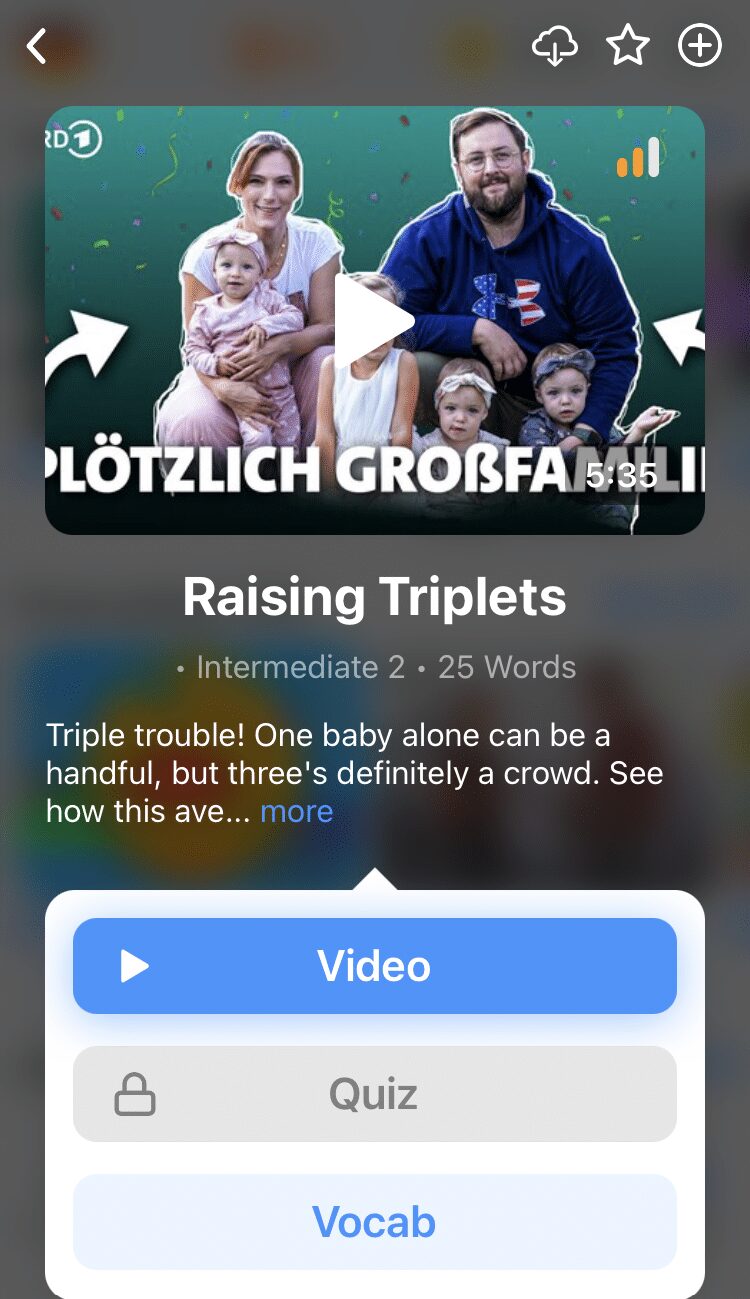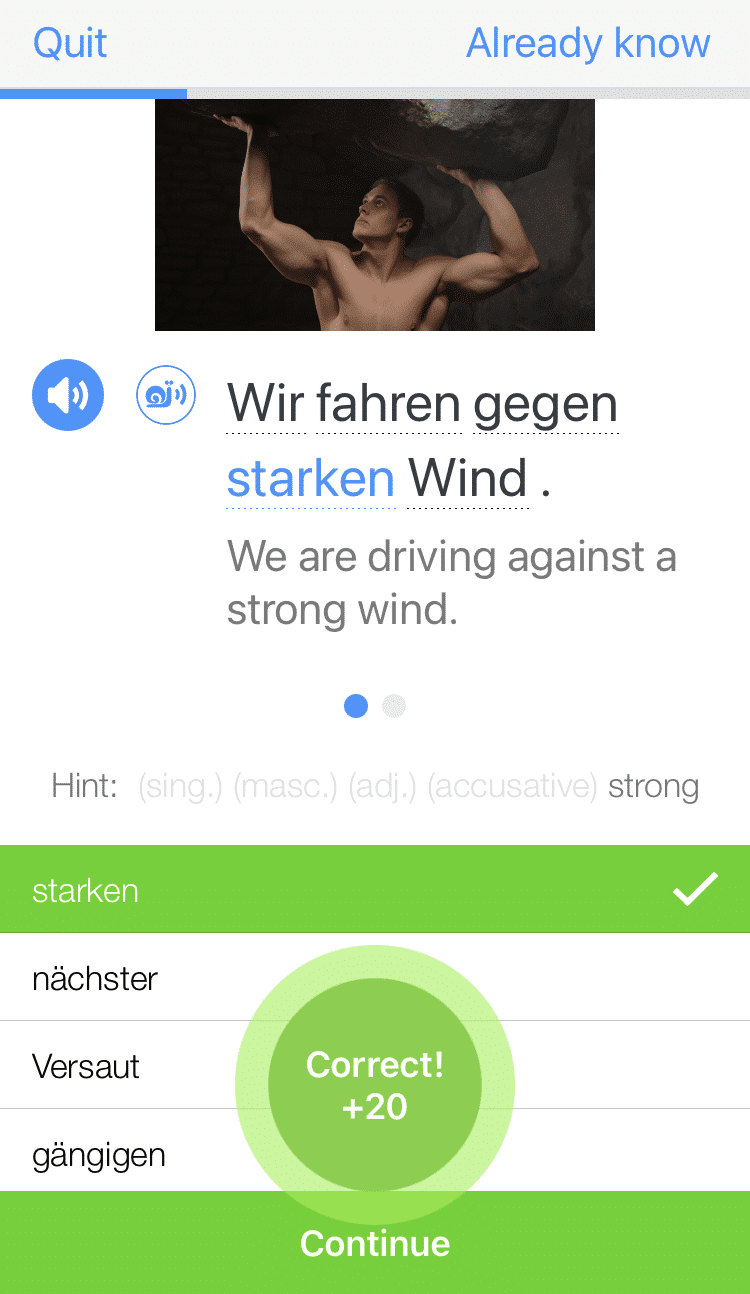8 Key German Gestures

Even think about how often you use gestures when you speak? You probably don’t even realize how often you give the thumbs-up sign, shrug your shoulders or wave your hands around.
Here are some of the most important German gestures that you need to know about and a couple of familiar gestures to make sure you avoid while in Germany.
Download: This blog post is available as a convenient and portable PDF that you can take anywhere. Click here to get a copy. (Download)
1. The “Thumbs Up” Sign
If you’re generally happy with something or want to let someone know that you agree with them, in the U.S., we simply give a “thumbs up.” This is done by making a fist and pointing the thumb upward. But when you make this sign in Germany, people will just think that you’re counting.
If you’ve seen the movie “Inglourious Basterds,” you’ll probably already be aware of this.
In one particular scene, a spy who’s posing as a German soldier in a bar gives himself away by holding up his three middle fingers when asking for three glasses. A German would have shown the number three by holding up their index and middle fingers alongside their thumb. (This is also an example of how important it is to understand the nuances of gestures and body language!)
Later on, Bridget Von Hammersmark reveals the spy’s mistake.
On the other hand, the “thumbs down” in German culture has the same meaning as in English—disagreement or disapproval.
2. Pressing Your Thumbs for Luck
In the U.S., it’s super easy to show that you’re hoping for luck—all you need to do is cross your fingers. But if you try to do this in Germany, people might struggle to understand you (and look at you a little funny).
Rather than cross their fingers, the Germans press their thumbs. So rather than telling someone that you’re crossing your fingers for them, you would say “Ich drücke dir die Daumen.” (“I’ll press my thumbs for you.”) This is often accompanied by pressing the thumb into the palm of the hand and wrapping all the other fingers around it.
It should look like you’re giving a “thumbs up,” but your thumb is actually in the fist that you make.
Check it out here:
3. Pressing Your Forehead

When you’re chatting with someone, you might want to (jokingly) make it known that you think what they’re saying is completely stupid. More often than not, you’ll only do this among friends—and definitely not at work!
In Germany, do this by pressing your index finger into your forehead. Most Germans will then tap their forehead in this way to show just how stupid they think the speaker is.
4. Waving Your Hand in Front of Your Face
If you want another gesture to express that you think what the speaker is saying is a little silly, you can always wave your hand in front of your face. Waving your hand like this is a way of saying, “You’ve got to be kidding me!” or “You are totally insane.”
This German gesture of waving your hand in front of your face emphasizes that you think something is insane or crazy. pic.twitter.com/O12Lji4dSN
— Shelley Pascual (@shelleypascual) June 21, 2018
We don’t really have an equivalent gesture to this one, so you might find it quite funny whenever you see any Germans do this. Of course, it won’t be so funny if it’s ever aimed at you!
5. Hands in Your Pockets

In the U.S., there are many gestures that are considered rude. Things like sticking your middle finger up at someone can cause serious offense, for example. But did you realize that some of the body language you utilize without thinking can be seriously offensive to others from another country?
For instance, if you stand with your hands in your pockets in the U.S., you’ll probably just come across as very relaxed with the situation. However, this isn’t the case in German-speaking countries. In fact, speaking to someone with your hands in your pockets over there can be seen as very rude and disrespectful to the speaker.
So while you’re practicing those speaking skills in Germany, be sure to have your hands out of your pockets—or the person you’re talking to might get the completely wrong impression!
After all, learning a language isn’t just about the words—being familiar with cultural norms also plays a huge part in it. You can learn more about German culture while studying the language with an immersive tool like FluentU.
FluentU takes authentic videos—like music videos, movie trailers, news and inspiring talks—and turns them into personalized language learning lessons.
You can try FluentU for free for 2 weeks. Check out the website or download the iOS app or Android app.
P.S. Click here to take advantage of our current sale! (Expires at the end of this month.)
6. Pulling the Lower Eyelid Down

Again, this is another German gesture that doesn’t have an equivalent in the States. When we’re being sarcastic in English, it’s quite easy to get that from the tone of our voice. However, that isn’t so simple in German and, sometimes, sarcasm can be lost in the language.
That’s why Germans use a gesture to emphasize their sarcasm—they just pull down one of their lower eyelids using their finger. You can see an example of this being done right here.
7. The Forearm Jerk

One gesture that you should never make in Germany is the “forearm jerk,” which is just as rude as sticking out your middle finger. The forearm jerk is done by pushing up your right forearm with your right fist clenched, then slapping your left forearm with your left hand. It’s seen as a phallic gesture, and it means, “Screw you,” “Go to hell” or “Up yours”—you get the idea.
Less commonly, it can also have a sexual meaning, where you’re telling the other person that you’re interested in a specific woman.
8. The “Okay” Sign
Another positive sign that we use when we’re speaking English is the “okay” sign. It’s so easy to make this sign, you just need to touch the index finger to the thumb to create an “O” shape with them.
This sign is known to mean “okay” in many countries around the world. Except in Germany and other German-speaking countries, that is! See the video below for an example.
(Warning! This video contains adult language.)
In these countries, the gesture can actually mean something quite rude! So next time you want to let someone know that you think they’re doing a great job, you might want to tell them verbally!
Why Knowing German Gestures is Important
Germans might not be known for emphatic hand gestures, but they do use them.
Being familiar with German gestures will help you understand the language and culture better and avoid social faux pas! For example, maintaining eye contact while speaking is seen as basic politeness in Germany (along with being punctual).
German even has a gesture called Zählen, where counting one starts with the thumb, then add the index finger for two, the ring finger for three and so on. If you start counting like in English instead, starting with the index finger, then it can confuse who you’re talking to.
Not only that, but German gestures can really help your fluency. Some scientific studies of nonverbal communication show that we use body language and gestures to help us stick to a natural rhythm of speech. Also, many body language experts believe that gesturing while we talk can help our brain find words and phrases!
Now that you know what to do and what not to do, enjoy your trip to Germany!
And next time you’re at a loss for words while speaking to a German speaker, don’t be afraid to use your hands. One of these German gestures might say exactly what you mean.
Download: This blog post is available as a convenient and portable PDF that you can take anywhere. Click here to get a copy. (Download)
And One More Thing...
Want to know the key to learning German effectively?
It's using the right content and tools, like FluentU has to offer! Browse hundreds of videos, take endless quizzes and master the German language faster than you've ever imagine!
Watching a fun video, but having trouble understanding it? FluentU brings native videos within reach with interactive subtitles.
You can tap on any word to look it up instantly. Every definition has examples that have been written to help you understand how the word is used. If you see an interesting word you don't know, you can add it to a vocabulary list.
And FluentU isn't just for watching videos. It's a complete platform for learning. It's designed to effectively teach you all the vocabulary from any video. Swipe left or right to see more examples of the word you're on.
The best part is that FluentU keeps track of the vocabulary that you're learning, and gives you extra practice with difficult words. It'll even remind you when it’s time to review what you’ve learned.
Start using the FluentU website on your computer or tablet or, better yet, download the FluentU app from the iTunes or Google Play store. Click here to take advantage of our current sale! (Expires at the end of this month.)












